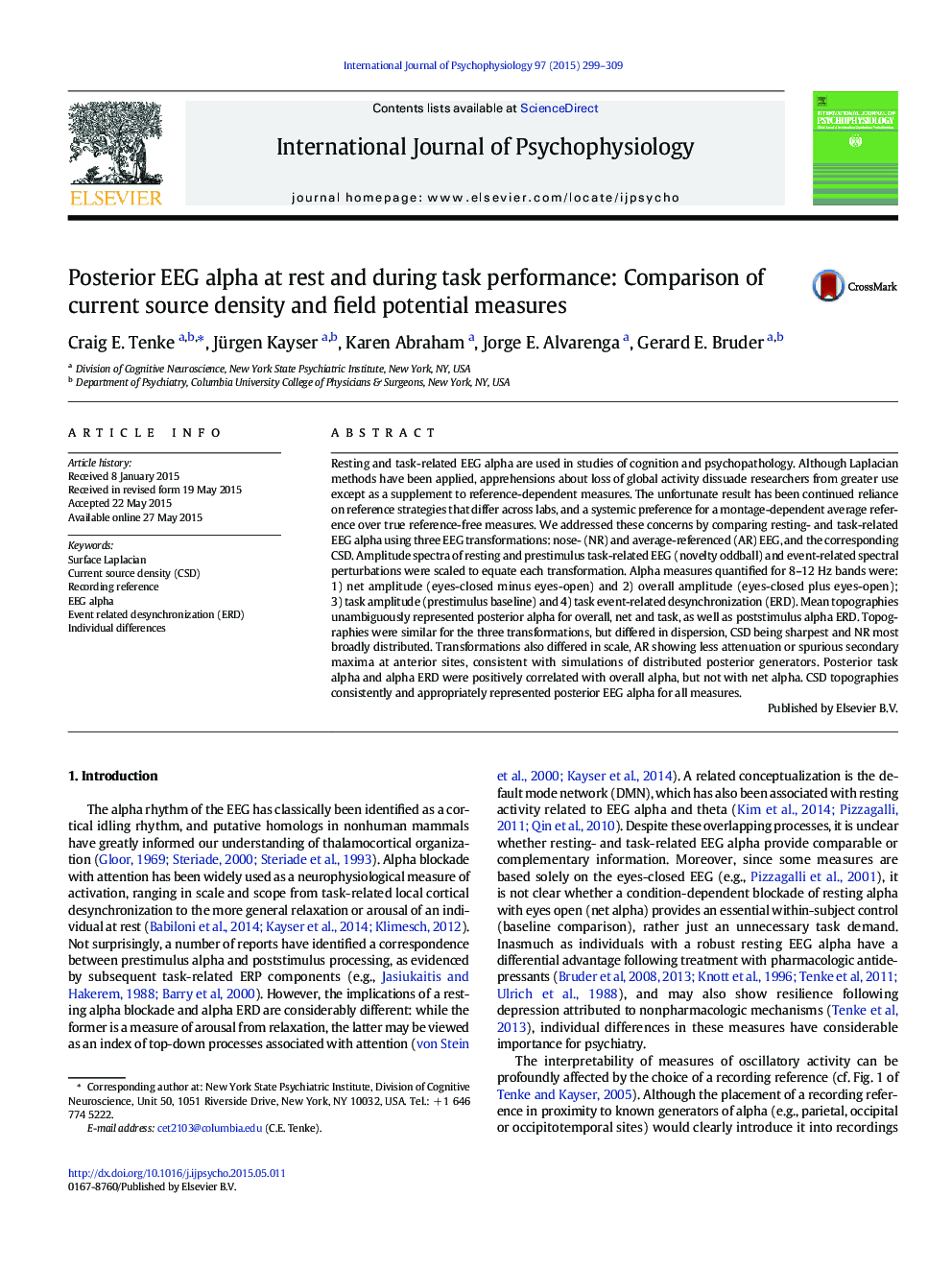| Article ID | Journal | Published Year | Pages | File Type |
|---|---|---|---|---|
| 7295355 | International Journal of Psychophysiology | 2015 | 11 Pages |
Abstract
Resting and task-related EEG alpha are used in studies of cognition and psychopathology. Although Laplacian methods have been applied, apprehensions about loss of global activity dissuade researchers from greater use except as a supplement to reference-dependent measures. The unfortunate result has been continued reliance on reference strategies that differ across labs, and a systemic preference for a montage-dependent average reference over true reference-free measures. We addressed these concerns by comparing resting- and task-related EEG alpha using three EEG transformations: nose- (NR) and average-referenced (AR) EEG, and the corresponding CSD. Amplitude spectra of resting and prestimulus task-related EEG (novelty oddball) and event-related spectral perturbations were scaled to equate each transformation. Alpha measures quantified for 8-12Â Hz bands were: 1) net amplitude (eyes-closed minus eyes-open) and 2) overall amplitude (eyes-closed plus eyes-open); 3) task amplitude (prestimulus baseline) and 4) task event-related desynchronization (ERD). Mean topographies unambiguously represented posterior alpha for overall, net and task, as well as poststimulus alpha ERD. Topographies were similar for the three transformations, but differed in dispersion, CSD being sharpest and NR most broadly distributed. Transformations also differed in scale, AR showing less attenuation or spurious secondary maxima at anterior sites, consistent with simulations of distributed posterior generators. Posterior task alpha and alpha ERD were positively correlated with overall alpha, but not with net alpha. CSD topographies consistently and appropriately represented posterior EEG alpha for all measures.
Related Topics
Life Sciences
Neuroscience
Behavioral Neuroscience
Authors
Craig E. Tenke, Jürgen Kayser, Karen Abraham, Jorge E. Alvarenga, Gerard E. Bruder,
